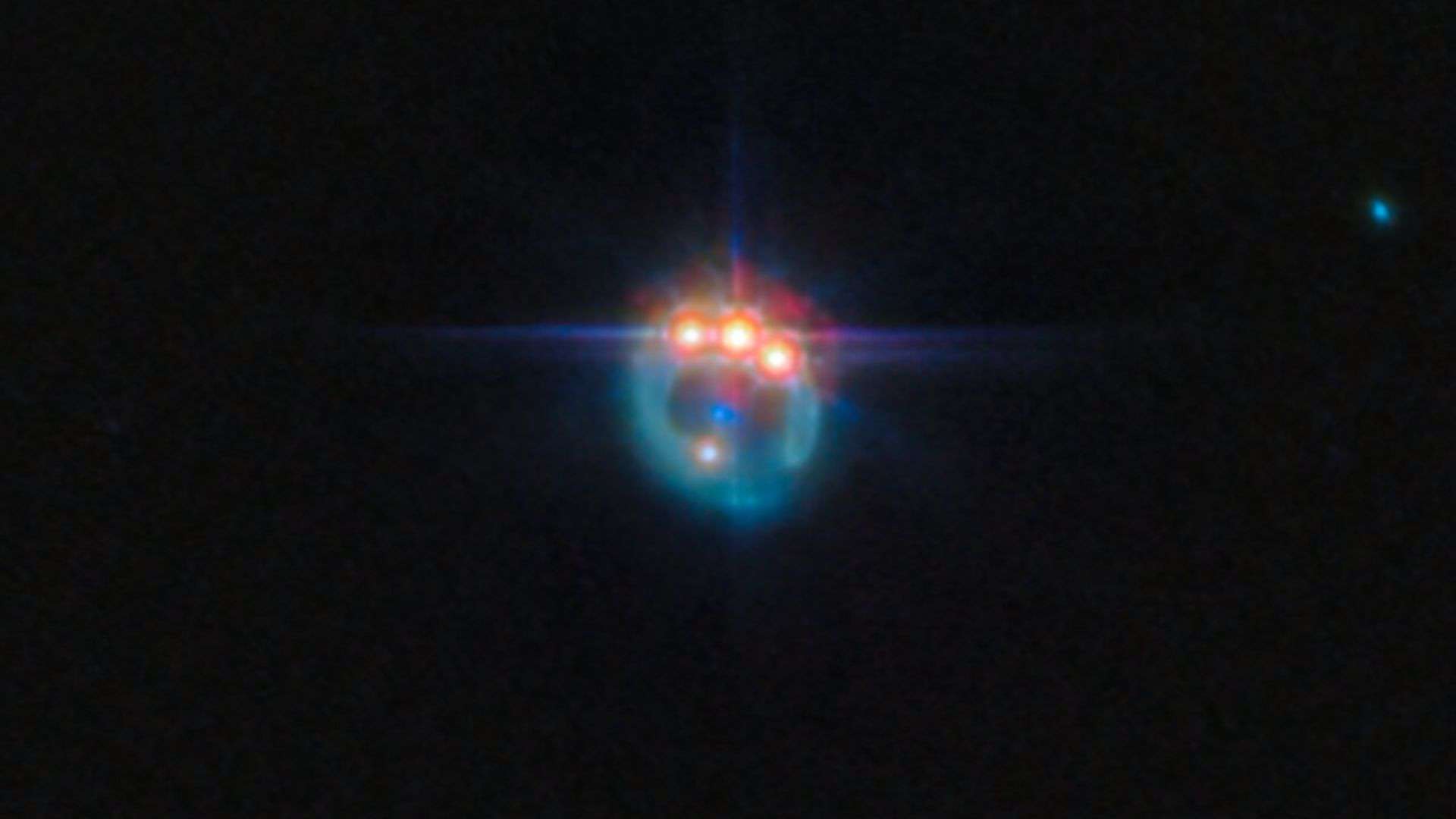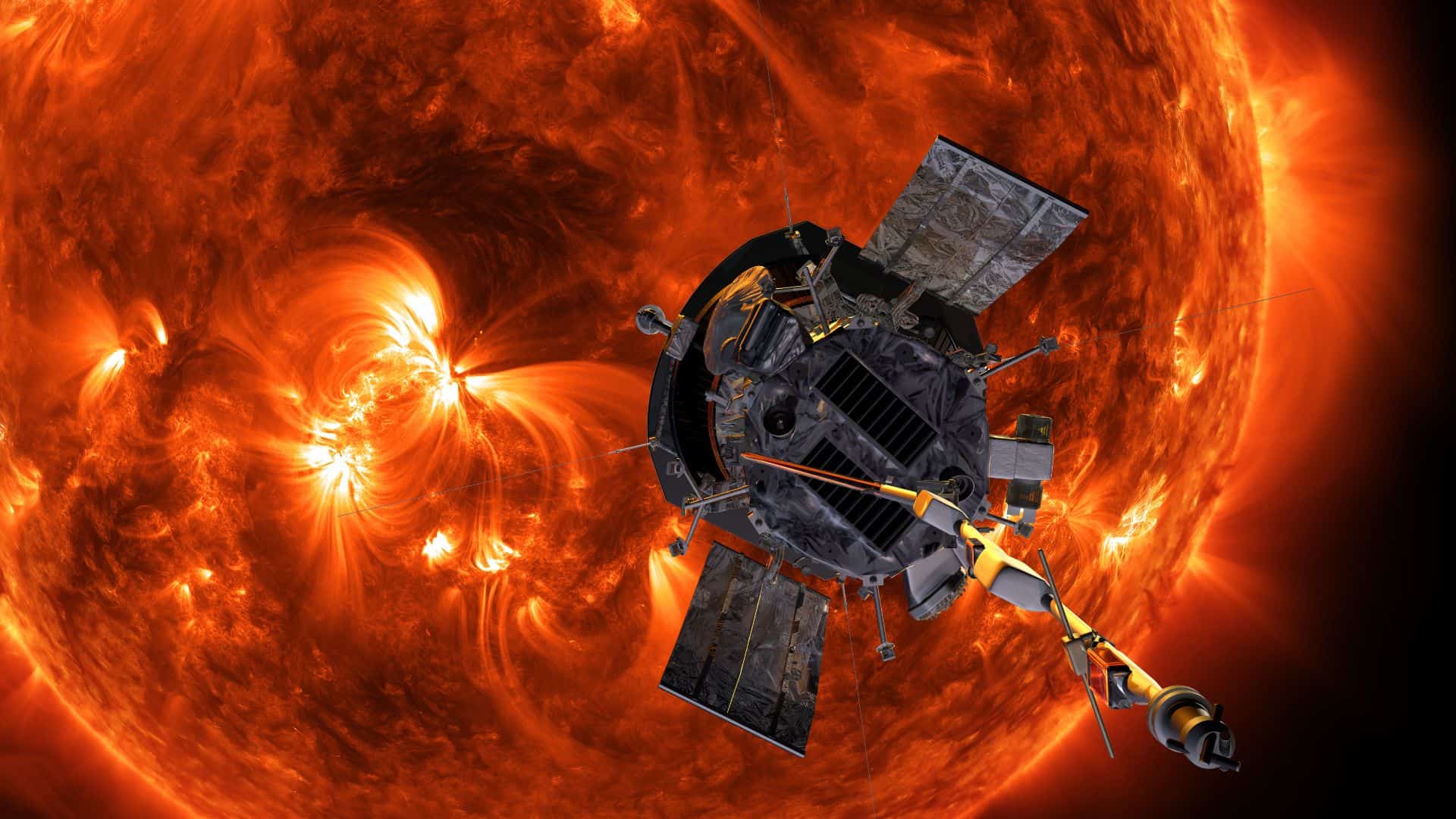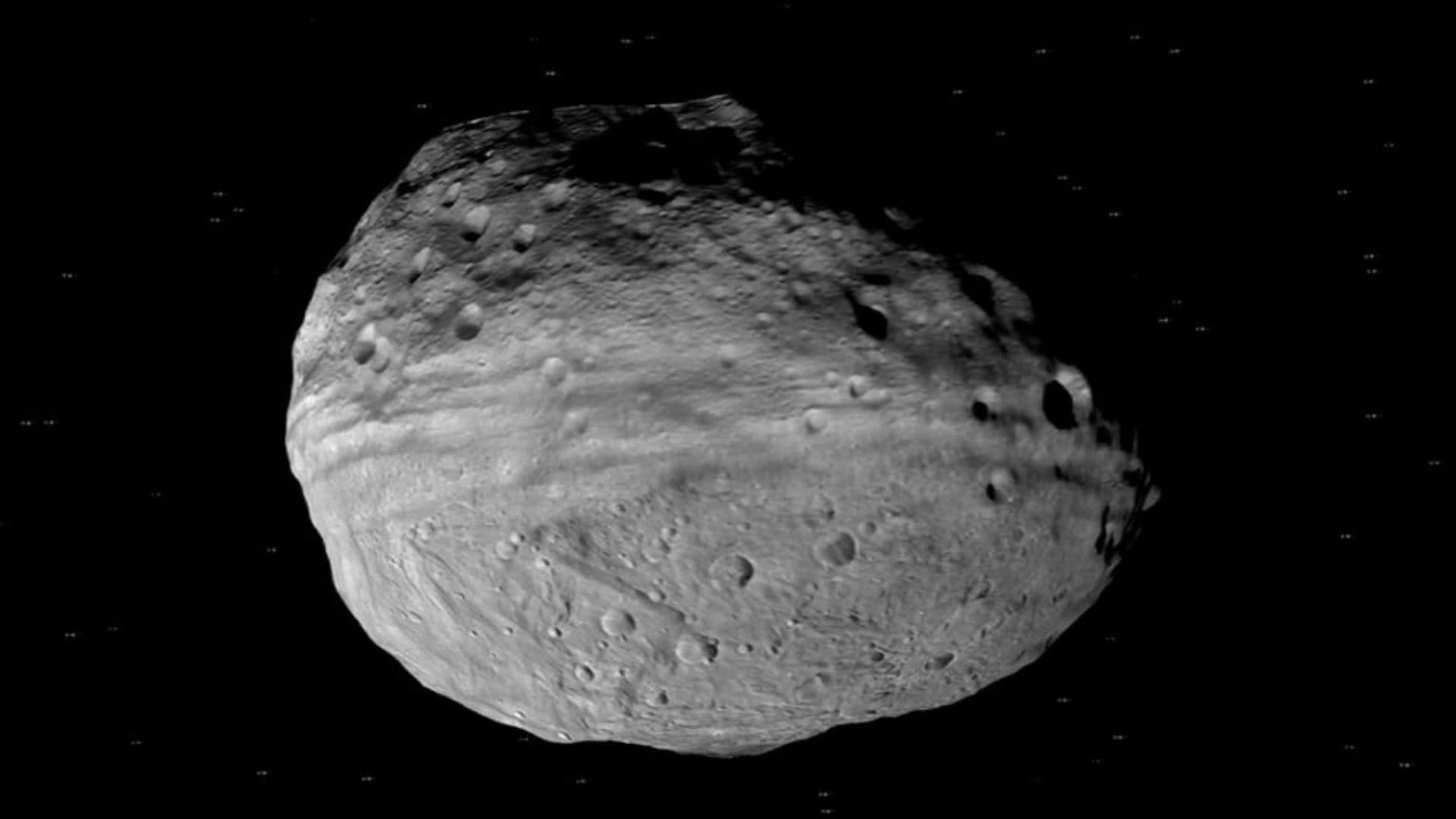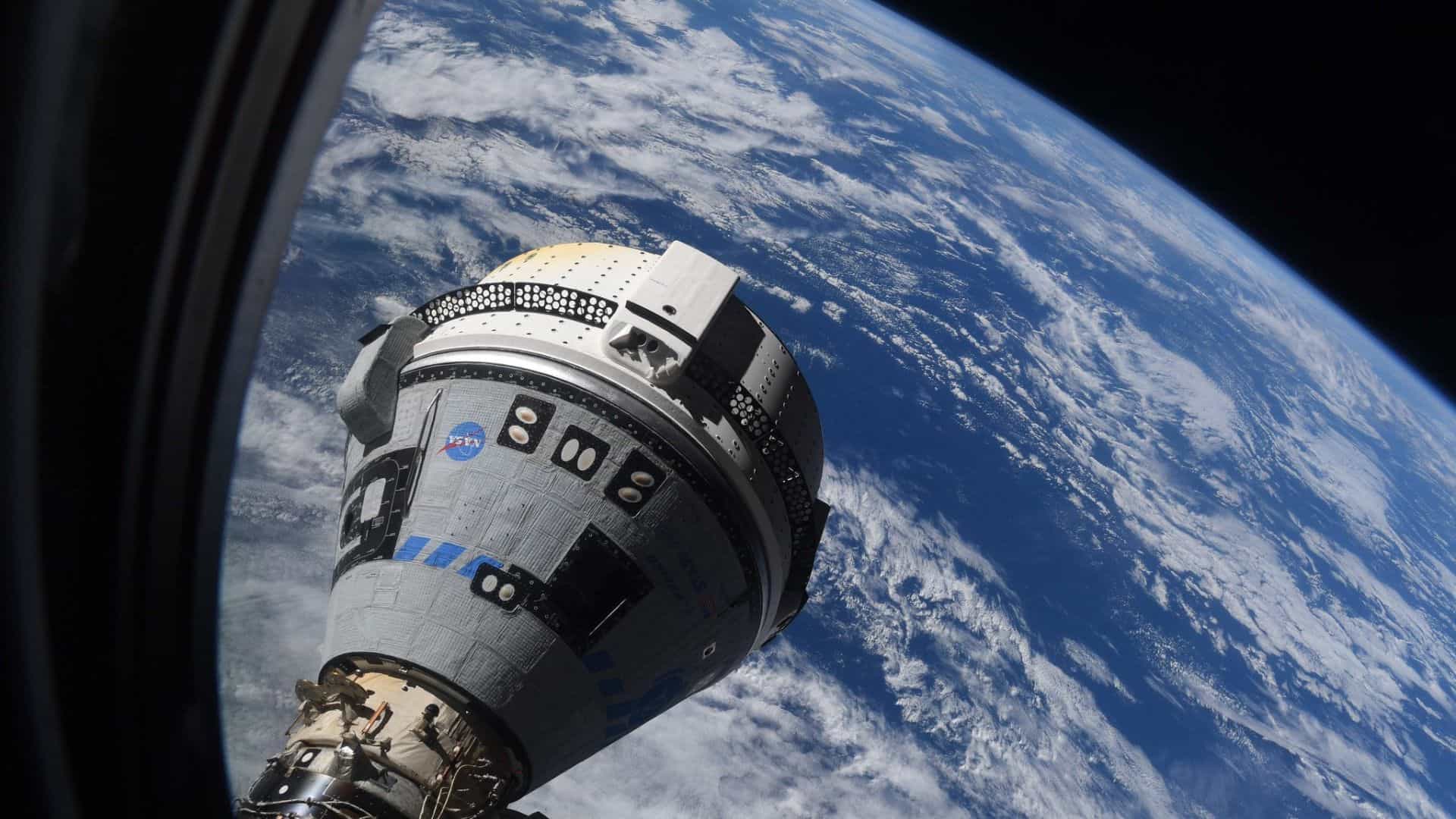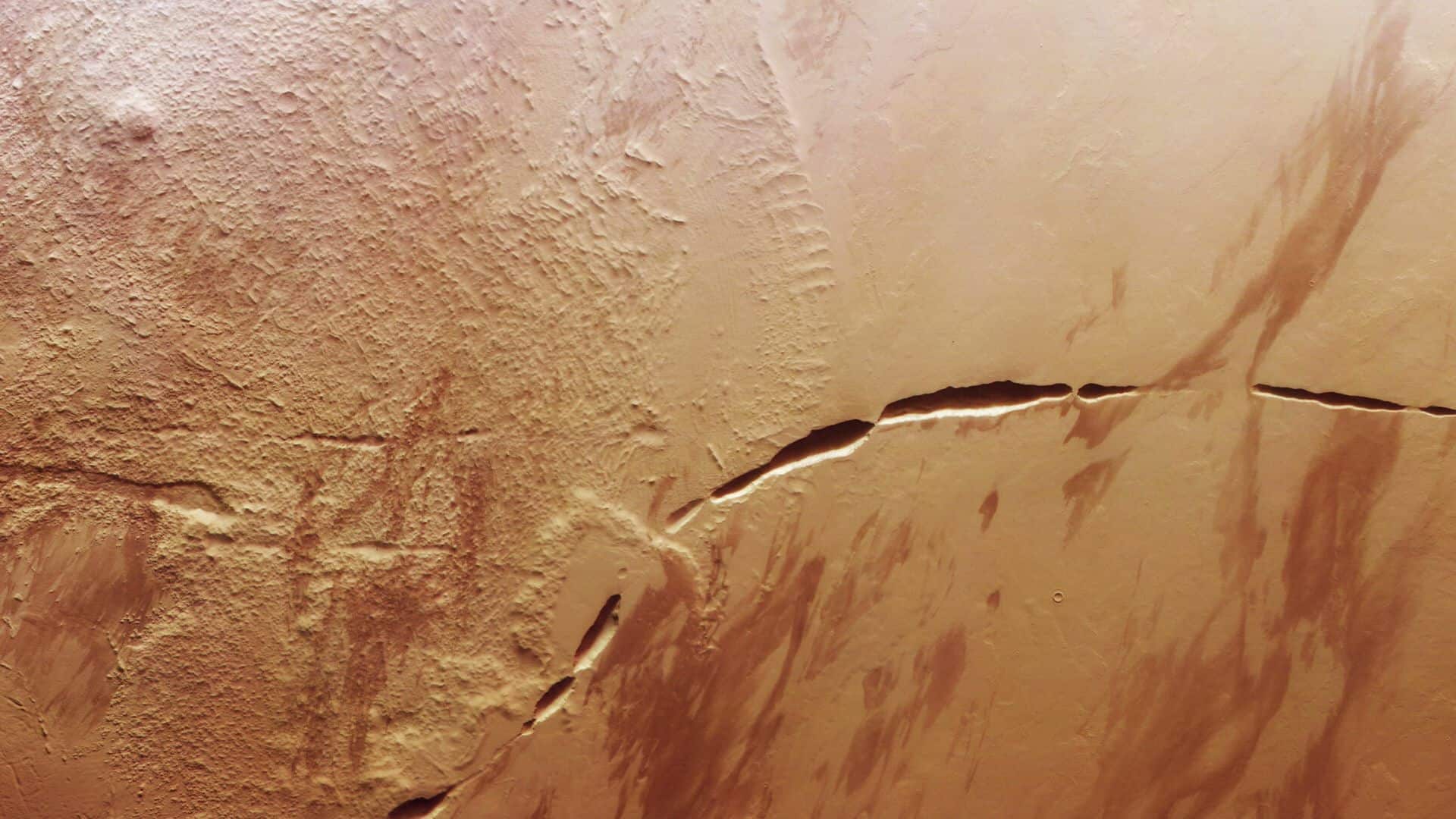
The European Space Agency’s (ESA) Mars Express orbiter has captured an uneven, roughly 600-km-long groove with steep walls on either side on Mars.
The groove, which is known as Aganippe Fossa, is located at the foot of Mars’s giant Arsia Mons volcano.
Scientists are still unsure of when and how Aganippe Fossa formed. However, they believe that it was formed due to the magma rising. The surface of Mars stretched and cracked due to the gargantuan mass of the Tharsis volcanoes, from where magma came out.
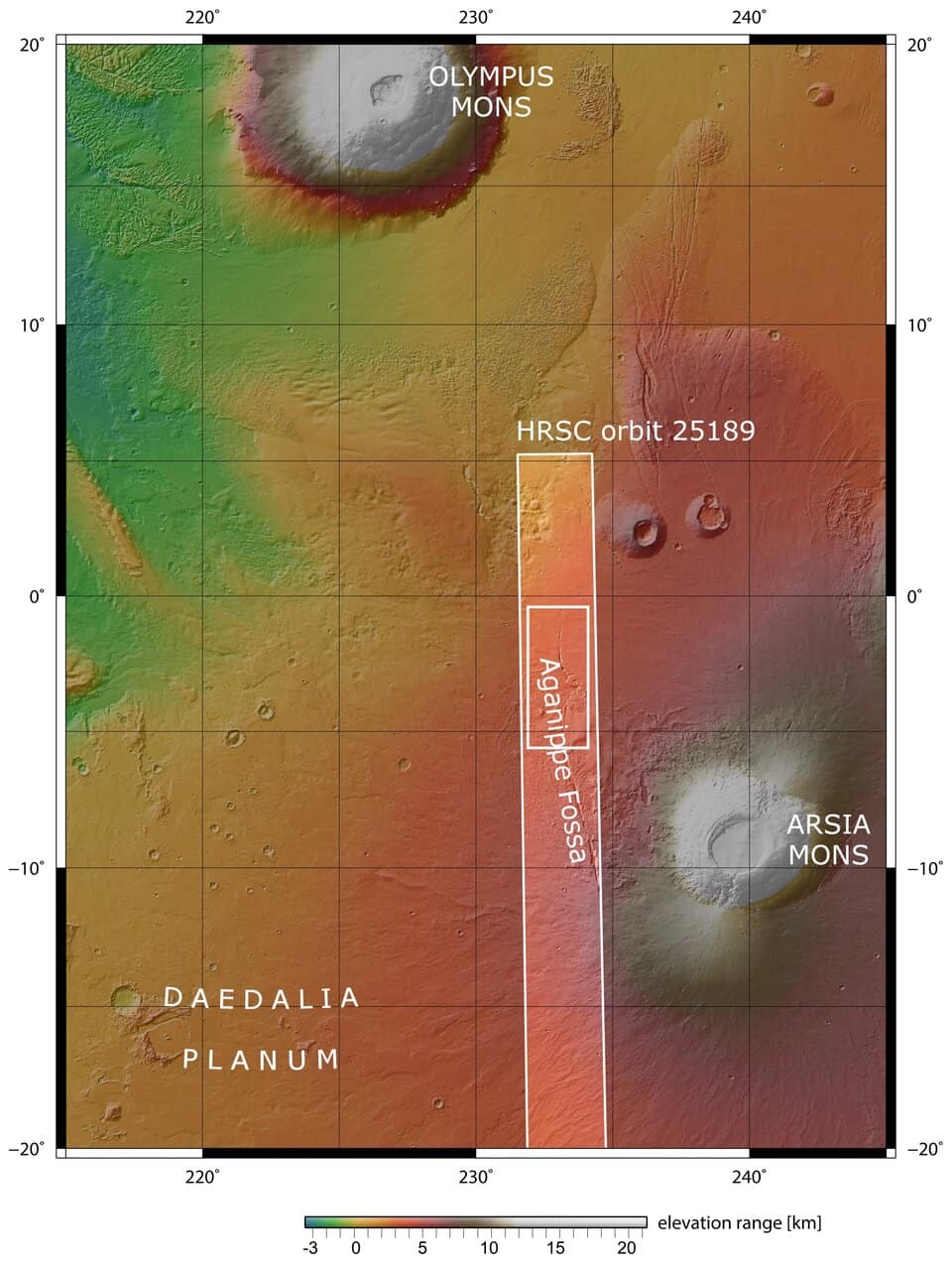
The Tharsis region is the largest volcanic region on Mars, and it is the home of Mars’s most famous volcanoes, named Ascraeus Mons (Mons is the Latin word for mountain), Pavonis Mons, Arsia Mons, and Olympus Mons.
Among them, Olympus Mons is the largest volcano in our solar system, standing 22 km tall.
ESA’s Mars Express orbiter, which has been orbiting the Red Planet since 2003, captured this image during its 25189th orbit.
Since then, the orbiter has been imaging Mars’s surface, mapping its minerals, and tracing the history of water.
Please follow us on Facebook and Twitter to get latest space news, upcoming skywatching events and astronomy-related content.
